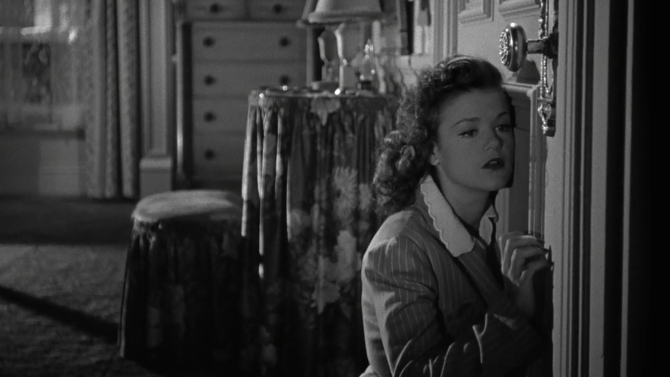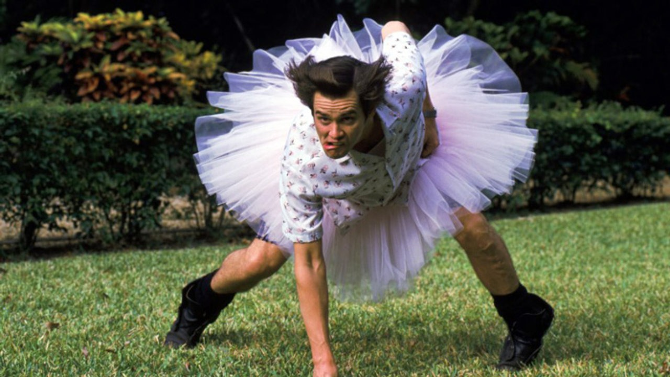
Safety First
Like a severe and utterly serious version of Stanley Kubrick’s 1964 satirical dark comedy Dr. Strangelove or: How I Learned to Stop Worrying and Love the Bomb, you would think that Fail Safe would have been the original release in theatres that was then later spoofed, yet that is not the case. Released approximately six months later in the same year, as you might imagine, it led to very poor returns at the box office – dare I say it (as the film deals with this subject matter)... it was a bomb! Despite that, over time, it has become a bonafide classic. Based upon Eugene Burdick’s 1962 novel of the same name and directed by Sidney Lumet (Dog Day Afternoon), he introduces us to our main players by way of little vignettes.
-

Catnip
Cat PeopleOctober 13, 2017In 1942, RKO Pictures set up a horror unit under producer Val Lewton, a former journalist, novelist and poet who had gone on to become a story editor for David O. Selznick. It was his job to develop low budget horror pictures for under 150,000 dollars, with the studio providing the titles for the films. His first task, the strangely named Cat People, almost seems like a joke. A way for RKO to compete with the popular Universal horror films of the time, Lewton hired writer DeWitt Bodeen (I Remember Mama), director Jacques Tourneur (Out of the Past), cinematographer Nicholas Musuraca (I kid you not, both Out of the Past and I Remember Mama), and composer Roy Webb (Notorious, Marty) – a quality ensemble. And, Lewton supervised everything, the type of producer who would do re-writes on scripts, aid with editing and be involved in every other minute detail of the production process. In a unique twist, the films Lewton created with RKO have become synonymous with him and his distinct style, rather than the directors’, a rare occurrence to be sure.
-
Star Pick with Guy Boucher
 Mission StatementThe MissionOctober 10, 2017
Mission StatementThe MissionOctober 10, 2017It was an absolute pleasure sitting down with Guy Boucher just prior to the beginning of the 2017-2018 National Hockey League season. At a charitable event for The Children’s Treatment Centre, he was one of the roasters of Ottawa Senators’ assistant coach Marc Crawford, in what can only be termed a hilarious evening. With an impressive start to his coaching career, Boucher began in the Quebec Major Junior Hockey League, capping it off by winning the Paul Dumont Trophy in 2009 – awarded to the personality of the year, while with the Drummondville Voltigeurs. The success brought with it a head coaching job with the Hamilton Bulldogs in the American Hockey League, the affiliate of the Montreal Canadiens, where he took home the Louis A. R. Pieri Memorial Award (coach of the year) in 2010.
-
Star Pick with Tia Carrere
 No Replicant RequiredBlade RunnerOctober 3, 2017
No Replicant RequiredBlade RunnerOctober 3, 2017The last few years have been a dream for fans of films and television series of the 1980s and 90s, as it seems like more and more are getting sequels (often after many long years), usually with at least a portion of the original cast (and often the director back in either the same role or that of producer) returning to play a part left behind long ago. Think, in no particular order, Dumb and Dumber, Full House, Mad Max, Rocky (Creed), Star Wars, Wet Hot American Summer (actually early 2000s), Jurassic Park, and, as of this Friday, add Blade Runner to the list. Returning to the silver screen thirty-five years after the original, Ridley Scott this time puts his executive producer cap on, with Denis Villeneuve taking over directorial efforts, while Harrison Ford delves into the Rick Deckard character once again. . . though, you’ll have to wait to hear more on that. As a lead-in to the long awaited sequel, the original 1982 picture is the focus today.
-
Star Pick with Michael Dante
 Gone with the Winds of ChangeGone with the WindSeptember 28, 2017
Gone with the Winds of ChangeGone with the WindSeptember 28, 2017It was lovely sitting down with veteran actor Michael Dante at Trekonderoga this past August. In the business for more than sixty years, it was not his original path in life. A top baseball player, he was signed by the Boston Braves out of high school. As fate would have it, he travelled a less expected path, finding his way, through interesting circumstances, into his first feature film, Robert Wise’s Somebody Up There Likes Me, in 1956 (with legendary names like Newman, Duvall and McQueen). Leading to an impressive career, Dante has graced the silver screen in such films as Westbound, Seven Thieves (Edward G. Robinson, Rod Steiger, Joan Collins, Eli Wallach), Kid Galahad (Elvis), The Naked Kiss (with famed director Samuel Fuller), Apache Rifles, Willard, as well as playing the title character in Winterhawk. . . this is just a small sampling of his work.
-

The Sound of Silence. . . Almost
LonesomeSeptember 22, 2017A striking picture from a unique moment in Hollywood history, Pál Fejös’ 1928 romantic drama Lonesome found itself one of the first transitional films between the silent and sound/talkie era. Originally developed as a Universal silent feature by the Hungarian filmmaker (Fejös, a Renaissance man, was also a doctor, World War 1 medic, anthropologist and explorer), in post-production it was decided that three dialogue scenes would be added – to appease audiences who desired the new effect following The Jazz Singer craze. A short transitional period of about two years followed, as filmmakers and studios began to adapt to the changing world of sound, adding touches of dialogue into their silent pictures.
-

An Ace Venture
Ace Ventura: Pet DetectiveSeptember 12, 2017One of those films that was not treated overly well by critics but is beloved by fans the world over, Ace Ventura: Pet Detective, shot lead Jim Carrey, then known to people mostly for being on In Living Color, into another stratosphere. The year 1994 was a good one for the comic and actor, as this film was followed soon after by The Mask and Dumb & Dumber, further adding to his meteoric rise. The next three years would further cement him as a true comic talent, as roles in Batman Forever, Ace Ventura: When Nature Calls, The Cable Guy and Liar Liar continuously hit viewers’ funny bones. Though, it was the character of Ace Ventura, which was co-written by Carrey, along with Jack Bernstein and Tom Shadyac (who also directed, and would work again with the actor in Liar Liar and Bruce Almighty), that first demonstrated his skills at physical comedy, mimicry, comedic timing and coining memorable catch phrases to be enjoyed by silver screen audiences.



